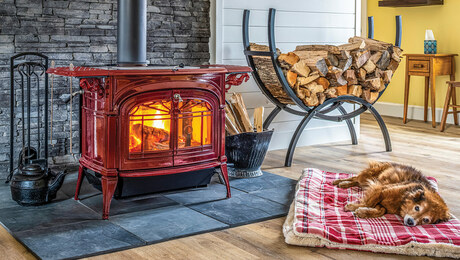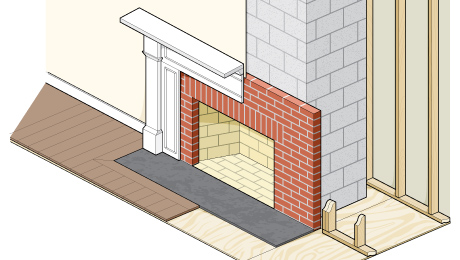Q:
Since moving to northwestern Montana, I’ve had trouble getting chimney flue linings larger than 16 in. by 16 in. I’ve heard of putting two linings together side by side, creating two flues for one fireplace. Would a pair of flue linings work? Also, I have a copy of a Los Angeles chimney code that shows solid grout around the flue lining, yet I was taught to leave an expansion area of 1/2 in. to 1 in. around a flue lining. Which is the correct method?
Jim Cutting, Somers, MT
A:
Carl Hagstrom, a builder and mason in Montross, Pennsylvania, replies: The area of a flue lining should be at least 1/10 the area of the fireplace opening. If a 16-in. by 16-in. flue lining is the largest available in your area, that doesn’t necessarily limit your fireplace opening to 17-1/2 sq. ft. (10 times the 16-in. square flue lining). If your fireplace is designed with a larger opening, you can use a double flue.
The NFPA (National Fire Protection Association) allows two flues to vent a single fireplace, and sizing them to meet the 1/10 rule should be adequate. But from my experience, it never hurts to oversize the flue area in a fireplace.
The NFPA also requires the flue lining to be separated from the chimney wall by an unobstructed airspace that’s at least 1/2 in. wide but no more than 1 in. wide. You’ll have to separate the pair of flue linings, too. To seal off the area between the two linings, rest them on a piece of 1/2-in. by 3-in. flat steel stock built into the smoke chamber. Flue linings experience large the rmal swings, and the space around them allows for expansion without affecting the chimney walls. Never fill this space with grout. When laying up the courses of flue lining, use a non-water-soluble refractory cement, but use only enough to make a good joint; the refractory cement should squeeze out just enough to hold the flue linings in position.

























